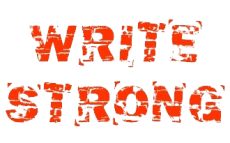 For the most part, writing is something that happens when we’re sitting still. Maybe if you’ve converted to a standing or treadmill desk, you’ve counteracted that a bit. Even then, though, you’re locked in to that one spot in your house, office, or coffee shop (don’t take your treadmill into a coffee shop, trust me). Even if you go to the nearest park with a notebook and write there, it’s often sitting on a bench or under a tree. Or if you go on walks to muse about a particular plot point, eventually you have to return to your desk to actually get them written down.
For the most part, writing is something that happens when we’re sitting still. Maybe if you’ve converted to a standing or treadmill desk, you’ve counteracted that a bit. Even then, though, you’re locked in to that one spot in your house, office, or coffee shop (don’t take your treadmill into a coffee shop, trust me). Even if you go to the nearest park with a notebook and write there, it’s often sitting on a bench or under a tree. Or if you go on walks to muse about a particular plot point, eventually you have to return to your desk to actually get them written down.
There is a technique, though, that could let you write on-the-go no matter when or where you might be: dictation. Using your voice rather than your fingers to lay the words in line. Why would you want to consider this?
- Activity: Dictating your writing means you’re no longer chained to a desk or computer. You can be taking more walks around the neighborhood or even dictating a story when at the gym. Writing can slip into many more areas of your schedule, freeing up some time to get in exercise.
- Inspiration: Author Kevin J. Anderson speaks a lot about this as he’s written dozens of novels (including ones for Star Wars and Dune) while hiking mountain trails and peaks. Being out in the wilderness—or just outdoors in general—while working on a scene can give you all sorts of sensory input, let you people-watch for character ideas, or explore part of a city where a scene is set.
- Productivity: Going on a long drive to a con? Record yourself dictating for however many hours you’re on the road. Some people also find that they dictate far faster than they type, upping their wordcount.
I’ve been training myself in this method for a while now, and it’s growing on me. I don’t use it exclusively, but it has been fun as I’ve improved. If you’re thinking of giving dictation a try, here’s what you’ll need:
- Microphone: If you’re dictating straight to your computer, invest in a good mic (preferably one that goes over your ear and has the mic piece right near your mouth for clearest pick-up).
- Audio Recorder: This is what you’ll use when away from your computer, and you can then either hire someone cheap to transcribe the recordings for you or use software to achieve the same thing, though perhaps less accurately. I use an Olympus model with a background noise-canceling mic clip, and it works rather well.
- Dictation Software: The most popular version of this is the Dragon Naturally Speaking software. Dragon also has an app that can be used on your tablet or smartphone as a handheld recorder. I haven’t used this option, so I’m not sure how well it compares to having a separate audio recorder. Note: If you want to transcribe from your audio recorder files, you’ll need the Premium Edition.
Yes, there are some downsides to dictation. For instance, dictation software requires a decent bit of training in order to start accurately transcribing your voice. If you have a story on your audio recorder and have the software transcribe it, there will likely be at least a few mistakes in the text you’ll have to clean up. Dictation can be much more efficient on the front end of the drafting process, but require more work on the back end to bring in the necessary level of polish.
In the end, dictation is another tool that could enhance both your writing and fitness efforts. It has worked well enough for me and others, but whether it’s a good option in your situation or worth the investment is up to you.
Is writing via dictation something you’ve ever considered before? Does it seem like it might help or just a hassle in getting used to a whole different way of writing? Have you ever tried writing alongside any sort of physical activity?

Be First to Comment